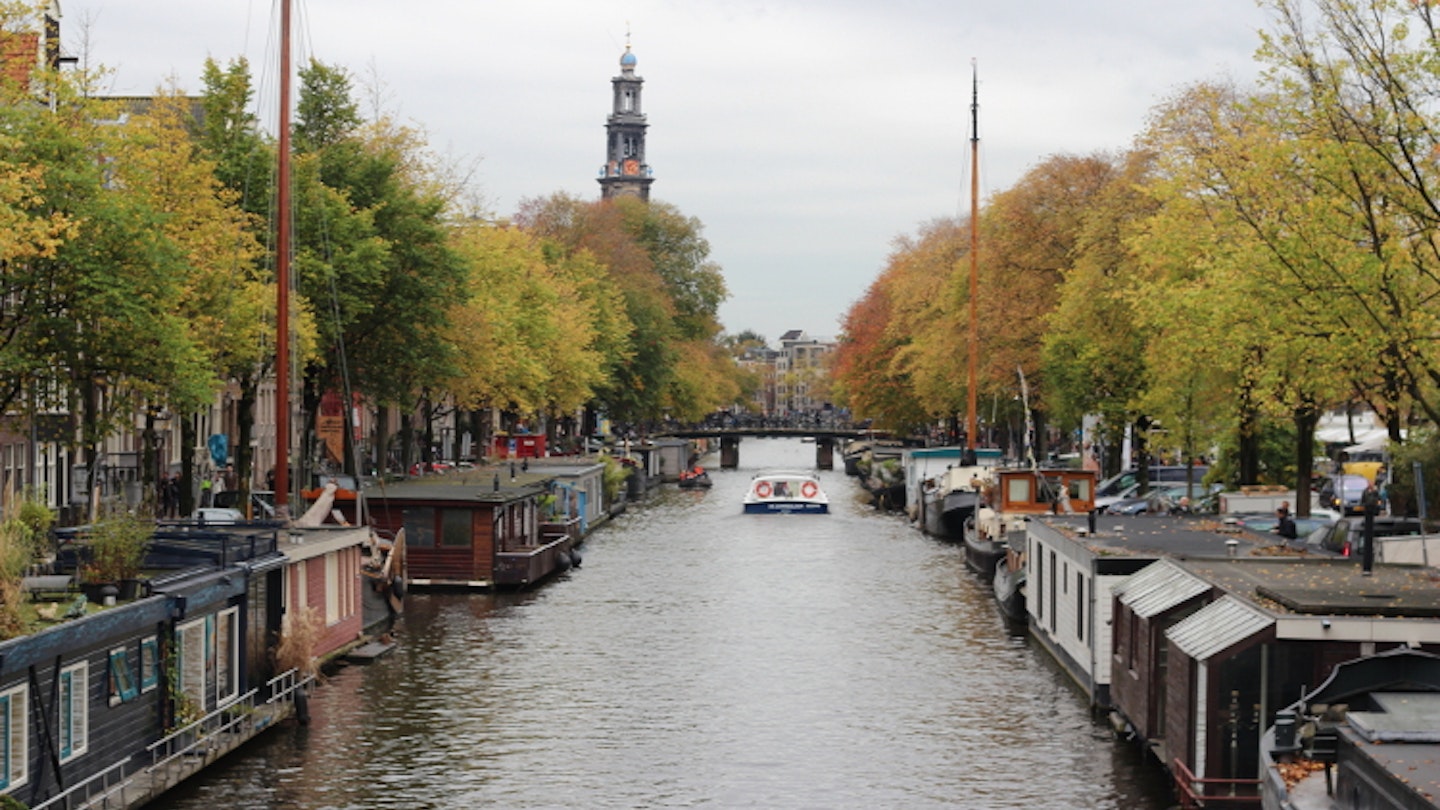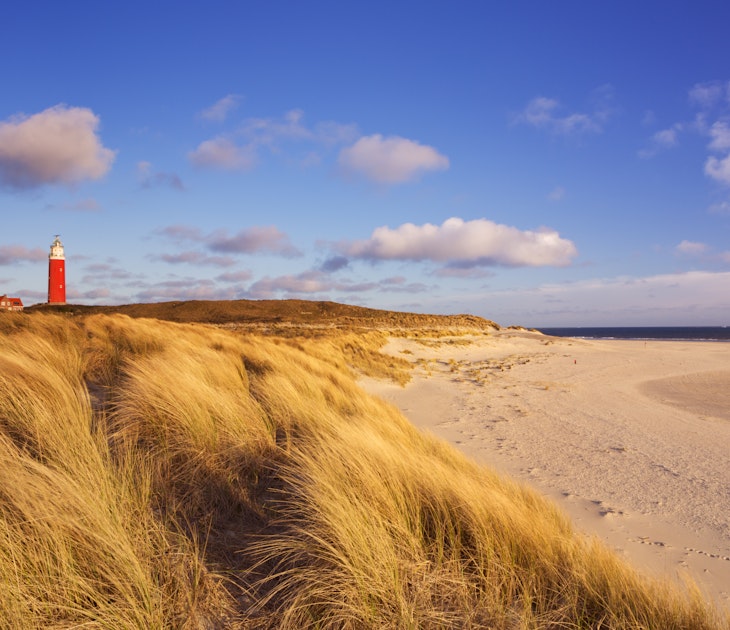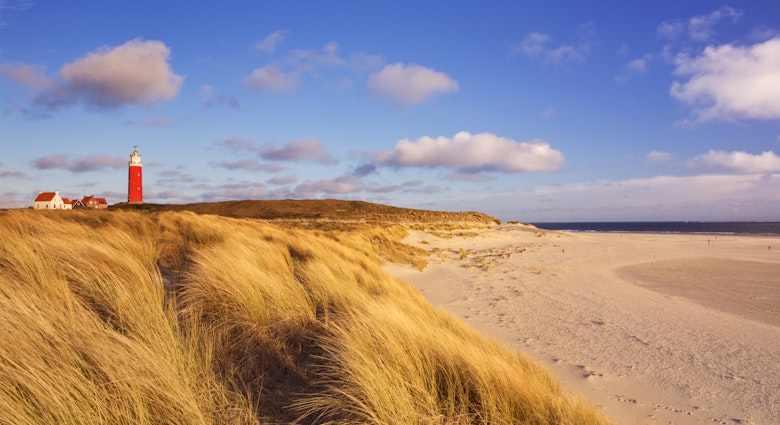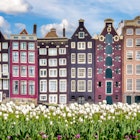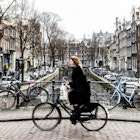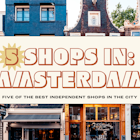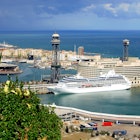The Dutch capital is a watery wonderland. Amsterdam's Unesco World Heritage-listed Canal Ring was built during the Golden Age after the seafaring port grew beyond its medieval walls, and authorities devised a ground-breaking expansion plan. Today Amsterdam has more canals than Venice – 165, covering 100km, crisscrossing 90 islands and spanned by 1281 bridges – which are enchanting to explore year-round.
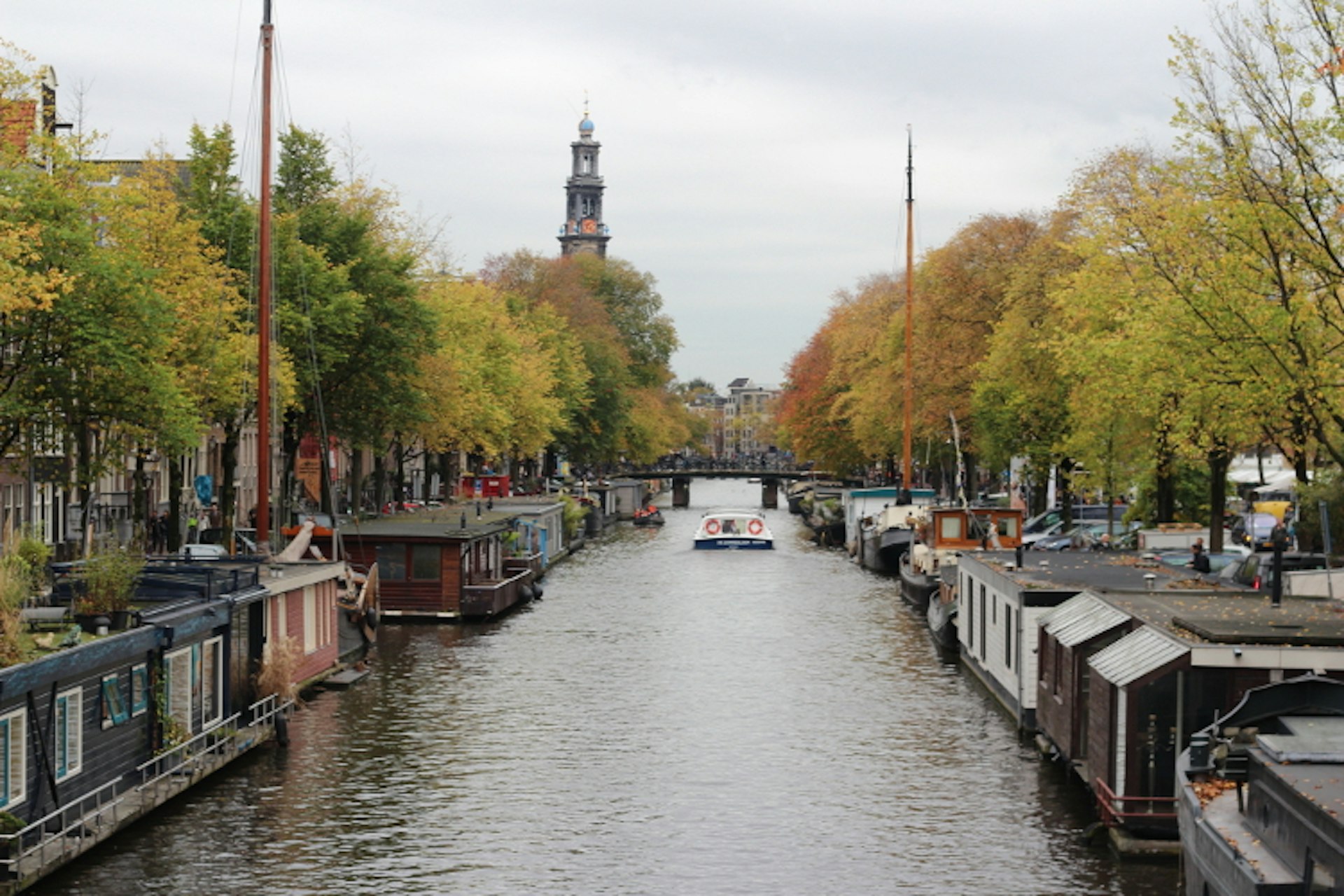
Evolution of the canals
Amsterdam's picturesque canals aren't just aesthetic: in the early 1600s they were crucial to drain and reclaim the waterlogged land and separate the land and sea. Much of this low-lying region is polder – land that once lay underwater. It was retrieved by building dykes across inlets and rivers, and pumping the water out with windmills (and later with steam and diesel pumps). To learn how integral the canals were in Amsterdam city planning, take a fascinating 45-minute audioguided tour of canal museum Het Grachtenhuis.
Most of the canals' locks close three times per week to allow fresh water to be pumped from the IJsselmeer lake, creating a current that flushes the stagnant canal water out through open locks and pumping it out to sea – check out the mighty Amstelsluizen on the Amstel river to see this feat of engineering in action.
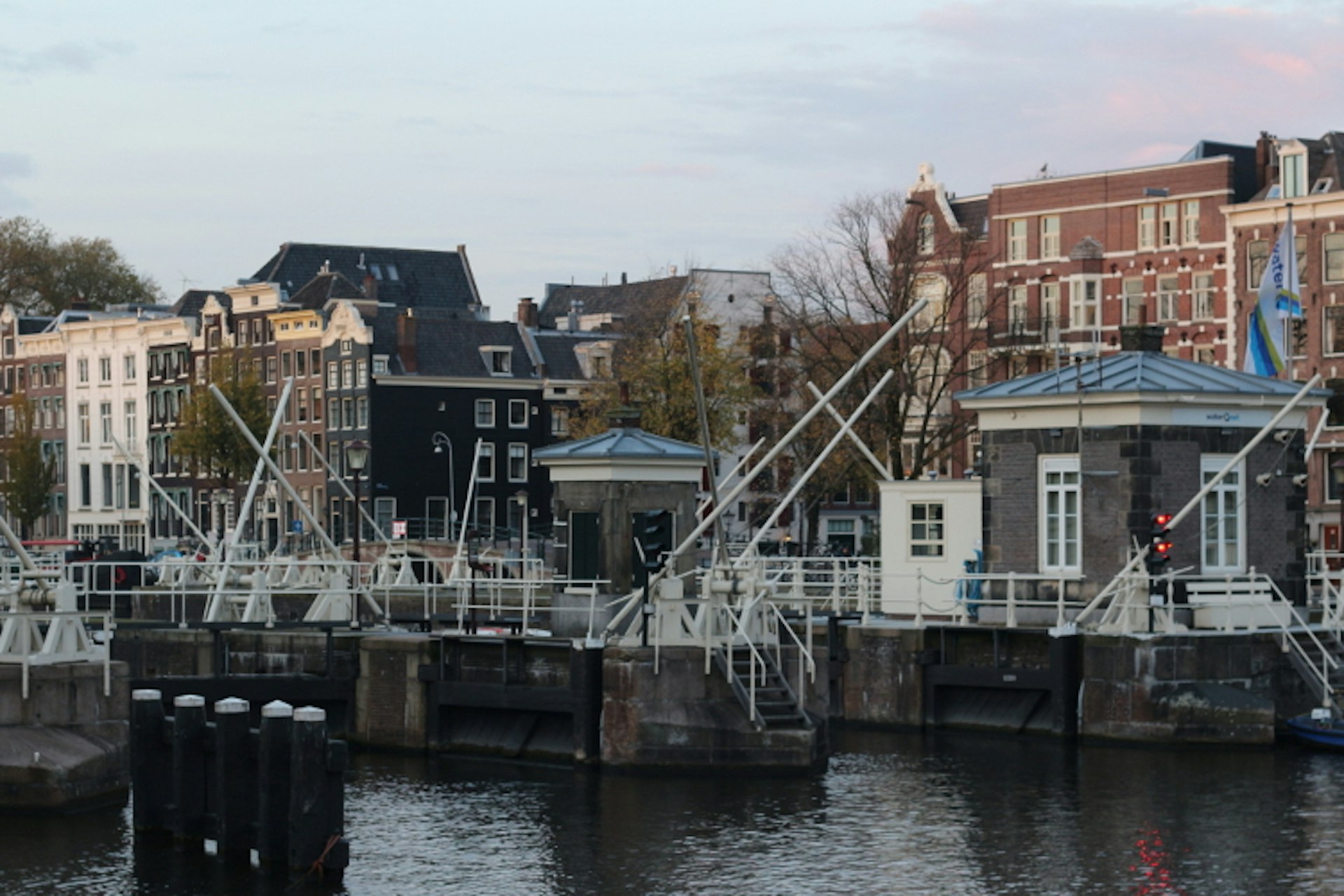
Navigating the waterways
The city's major semicircular ('core') canals are, from the centre, the Singel, originally a moat that defended Amsterdam's outer limits; the grand Herengracht ('Gentlemen's Canal'), where Amsterdam's wealthiest residents moved upon its completion; Keizersgracht (Emperor's Canal) and lively Prinsengracht, named after William the Silent, Prince of Orange and the first Dutch royal. To minimise your chances of getting lost in their concentric web, remember that, the singular Singel aside, they're laid out in alphabetical order.
Cutting across these core canals like bicycle spokes, the major radial canals – also in alphabetical order from west to east – are the exquisite Brouwersgracht (Brewers Canal), named for its 16th- and 17th-century breweries; Leidsegracht, once the main water route to its namesake city, Leiden; and Reguliersgracht, which takes its name from an order of monks whose monastery was located nearby. Reguliersgracht is where you'll find the iconic 'seven bridges', a quirk of construction that allows you to peer through the arches of seven humpbacked bridges, which twinkle with tiny gold lights come nightfall. (Where the Keizersgracht and Reguliersgracht intersect, you can count even more bridges – 15 in total – as you peer east-west and north-south.)
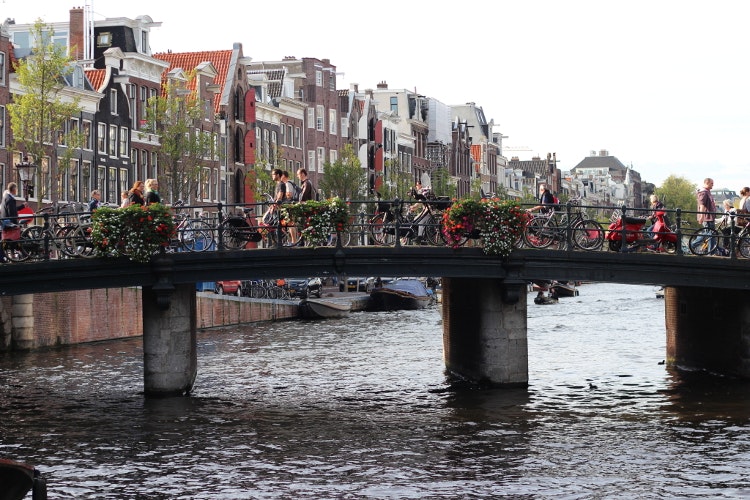
Canal houses and houseboats
Lining the banks, slender canal houses tip forward at precarious angles. Due to their near-vertical staircases, owners needed an easy way to move large goods and furniture to the upper floors. Hoists were built into the gables, to lift objects up and in through the windows, the slant allowing loading without smashing the facade. Property tax used to be paid on the house's frontage, meaning the narrower the facade, the less you paid. The ornate gables concealed the roof from public view, and helped identify the house until 1795, when the Netherlands' French occupiers introduced house numbers.
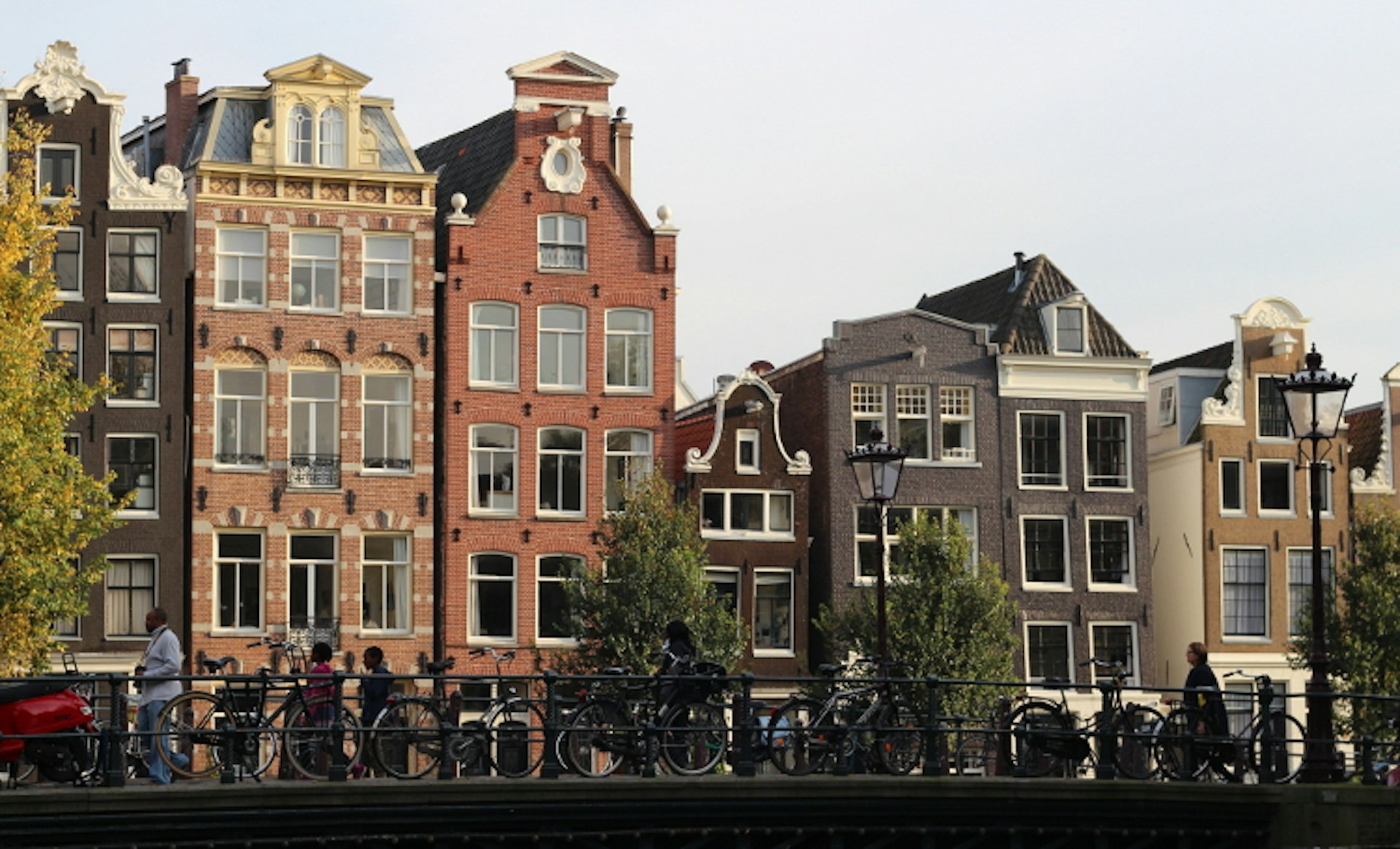
Opportunities to stay in Amsterdam's classical canal houses abound: many now house hotels across the price spectrum, from bargain Hotel Brouwer to the boutique Canal House, and the inimitable Hotel Pulitzer, ranging over 25 interconnected, history-steeped houses, with its own wharf.
After WWII, a surplus of old cargo ships helped compensate for a housing shortage on land and some 2500 houseboats (connected to the city's sewerage system) now line Amsterdam's canals. You can climb aboard and explore the surprisingly spacious interior of the century-old Hendrika Maria, which now contains the Houseboat Museum. To test out living on the water yourself, book an overnight houseboat stay with companies such as Frederic Rentabike (yes, it also rents bikes, the quintessential mode of transport for weaving between Amsterdam's waterways).
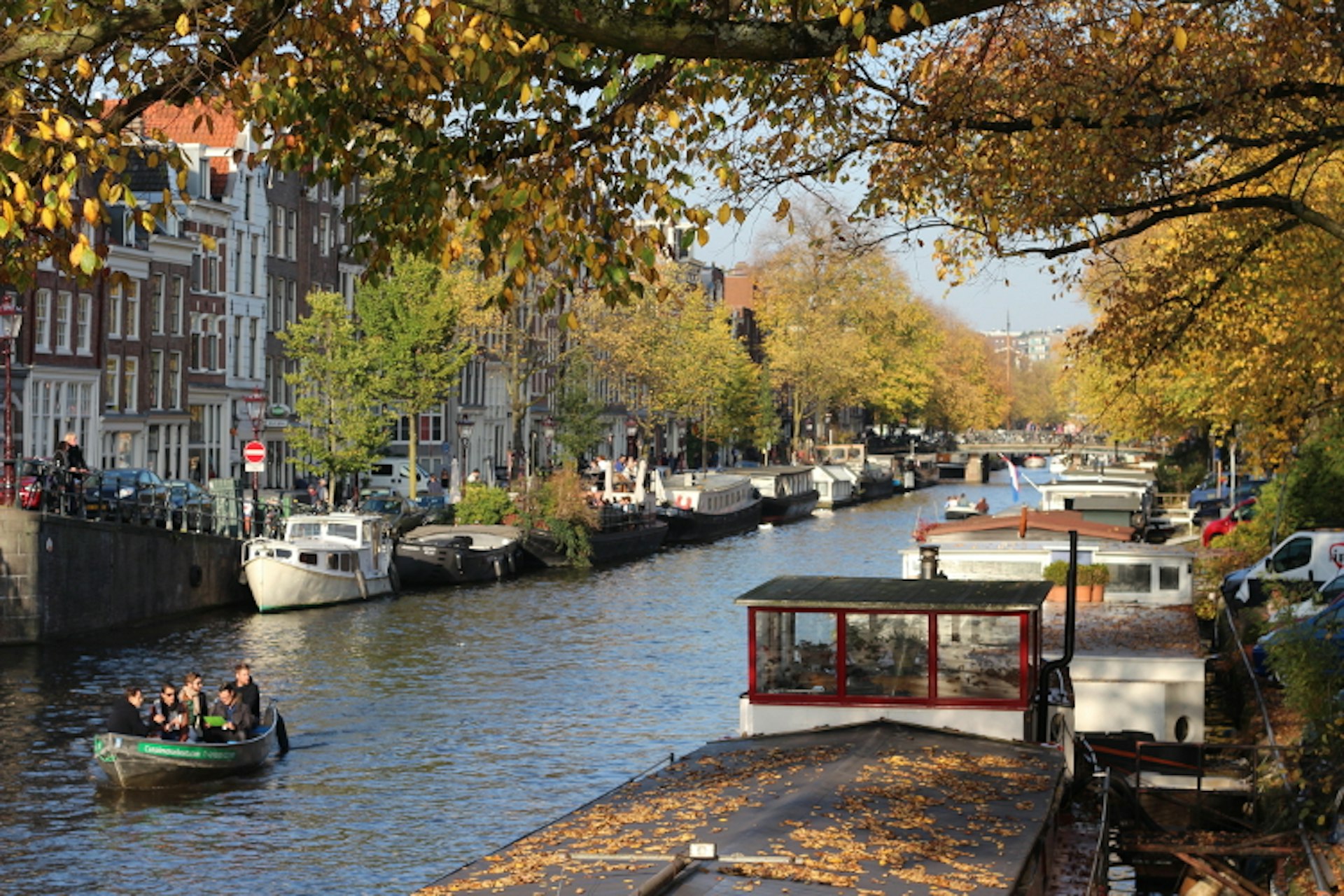
Cruising the canals
Of course, the best way to experience the canals is to get out on them. Over 3 million visitors board canal cruises each year and they're a fantastic – if touristy – way to see the city's waterways up close, both day and night when the bridges are lit up. Avoid steamed-up glass windows by choosing boats with open seating areas, such as the Blue Boat Company. If you want to stop along the way, the Canal Bus is a handy hop-on, hop-off service covering four routes. Its 20 docks throughout the city are located near landmarks including the Van Gogh Museum, Rijksmuseum and the Anne Frank Huis.
For the ultimate freedom, you can't beat cruising Amsterdam's canals in your own boat. Docking is permitted anywhere in the city except beneath bridges, on narrow waterways, at junctions, adjacent to rescue steps, or where signs indicate it's forbidden. Rental companies include Canal Motorboats, which has small, silent electric aluminium boats (maximum six passengers) that are eco-friendly and easy to drive, with no boat licence required. Or give your calves a workout by hiring a pedal-powered Canal Bike paddle boat. To get closer to the water still, rent a canoe or SUP (stand-up paddleboard) from Kanoschool.
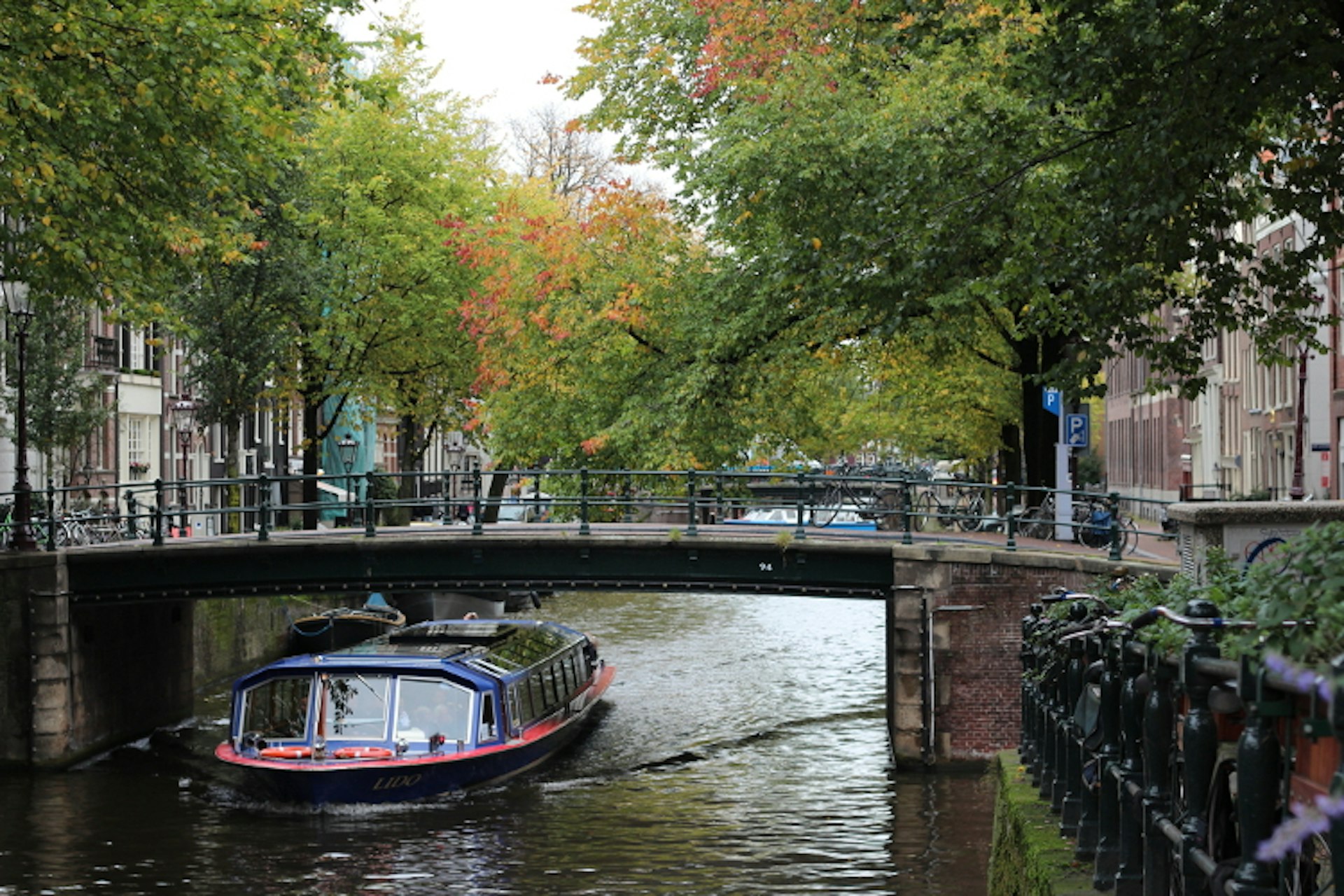
Canal festivities
As the city's lifeblood, the canals are a focal point for celebrations, from the orange-clad madness of King’s Day, Amsterdam Gay Pride (www.amsterdamgaypride.nl), the world's only waterborne gay pride festival, and the classical music Grachtenfestival ('Canal Festival'), to Sinterklaas Intocht (St Nicholas' arrival, heralding the Christmas season) and the Amsterdam Light Festival's (www.amsterdamlightfestival.com) dazzling projections and installations reflecting in the rippling waters.
Tips for staying safe (and dry!)
- If you're setting sail aboard a rental boat, stay on the waterways' right (starboard) side and give way to commercial traffic (including tour boats). Drinking alcohol while in control of a boat is illegal. Life jackets/vests aren't compulsory but are recommended.
- Fences or barriers along the canal banks are rare – keep an eye on young children to ensure they don't take an unexpected plunge.
- Ice skating is a popular winter pastime when the canals freeze over but only take to the ice where you see large groups of people, and avoid weak ice at the edges and under bridges.
